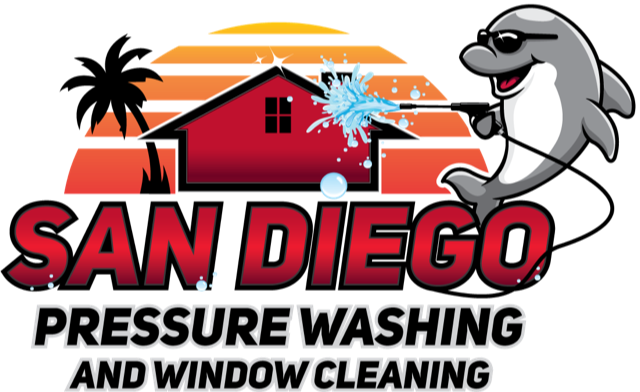Fences are essential to any property, providing privacy, security, and aesthetic appeal. However, exposure to weather, dirt, algae, and mildew can make your fence look dull and uninviting. Pressure washing is one of the most effective ways to restore your fence’s charm. This guide explores the details of fence pressure washing, from preparation to final touches, ensuring your fence shines like new.
Key Takeaways
- Wear safety gear, clear the area, and protect plants before starting.
- Use proper nozzles, PSI, and cleaners based on fence material.
- Scrub stains, rinse well, dry, and apply sealant or paint.
- Adjust pressure settings for wood, vinyl, or composite fences.
- Wash and seal fences yearly for lasting durability.
- Hire professionals as professional services ensure safe, effective, and hassle-free cleaning.
What to Do Before Pressure Washing Fence?
Before diving into pressure washing, some essential steps ensure a safe and effective cleaning process.
Safety First
Safety comes first. Wear protective gear like gloves, non-slip footwear, and safety goggles to protect your most important body parts like eyes, legs, arms, and hands. Pressure washers can cause injuries if you don’t use them correctly. You may even contract an infection if the laceration is deep. Always use the pressure washer properly and never leave it unattended. Release the remaining pressure when you switch off the pressure washer. Rely on the professionals for pressure washing tasks as they can rightly handle the equipment.
Prepare the Area
Before pressure washing the vinyl fence, prepare the area for a safe and effective process. Ensure to remove any loose debris and decorative items from the fence. Put the lawn furniture and other items aside to avoid any kind of obstacles or accidents. Close all the doors and windows to prevent water from flooding your home.
Protect Plants and Soil
Cover the nearby plants and soil with plastic sheets or tarps to protect them. If you have flower pots, move them away from the washing area. Avoid over-saturating the soil with cleaning solutions, as it may have damaging effects on the roots of the plants.
Steps to Pressure Wash a Fence
Once the area is prepared, it’s time to start the pressure washing process. Follow these steps to clean your fence effectively –
Use the Right Nozzle and PSI
The wrong nozzle can severely damage the wooden fence. A nozzle should not be too fine or narrow. Use the nozzle with a 25-degree tip to effectively get rid of dirt and grime. Talking about the PSI, it depends on the material and hardness of the wood. Generally, you should keep it between 500-800 PSI for softer woods and 1200-1500 for harder woods. Before setting the pressure, you should test out the PSI in a small area. For vinyl fences, a PSI of 2400 is considered generally safe.
Choose a Proper Fence Cleaner
Choose the fence cleaner depending on the material of your fence. Some cleaners are made specifically for wood that is safe enough to avoid damaging the fence. Let the detergent sit for 5-10 minutes before washing it off with the water.
Clean With the Right Approach
The best approach to pressure washing vinyl fences is the bottom-up and left-to-right approach. Maintain a distance of 12-18 inches from the surface to prevent damage. Using a bottom-up approach prevents streaking. Besides, if you have a bigger fence, start working in sections. It means repeating the same process multiple times. Doing this allows for better results.
Use a Scrub Brush for Stubborn Stains
Use a rotating scrub brush and attachment to clean the stubborn stains. It will break down the difficult stains and is helpful for areas with algae or mildew buildup. Let it sit for a few minutes before rinsing it off with the pressure washer.
Rinse Thoroughly
Rinse the surface of the fence to eliminate all the remnants of cleaner and dirt until the water runs clear. Start from the top and work downward to rinse the detergent.
Dry and Repeat
Let your fence dry completely, which will take about 1-2 days, depending on the weather conditions and the type of fence you have. If you have heavily soiled fences, you may need to repeat the process for a spotless finish.
Apply Sealant or Paint
Now that your fence is completely dry apply a sealant or fresh coat of paint. It enhances the appearance and protects the fence from sun or wind damage. Seal the fence completely; that is, apply it on the gaps or edges of the boards, too.
Types of Fence Material, Different Pressure Setting
Different fence materials require varying pressure settings and techniques to avoid damage while achieving optimal results. Here’s a breakdown –
Pressure Wash Steel Fence
It is not advisable to use a pressure washer on steel fences as it can strip away the surface protection and chip away the paint in the case of a painted steel fence. However, you can use a low-pressure setting and a wider nozzle for such surfaces. What’s more? Old-fashioned methods like combining dishwasher and warm water in a bucket can work well for steel surfaces. Gently wipe the fence using this mixture and a soft cloth from top to bottom.
Pressure Washing Wood Fences
How to pressure wash a wood fence? Start the fence pressure washing of wooden surfaces by working in sections and using a low-pressure setting. Choose a wood-safe fence cleaner and apply it to the rinsed area. Scrub the stubborn stains with a soft-bristled brush. Let the cleaner sit for a few minutes, and rinse the soap away with clean water. Repeat all the steps on other sections until the whole fence is washed thoroughly.
Pressure Washing Vinyl Fences
Most homeowners choose to have vinyl fences, which are relatively easy to maintain. Use a low-pressure setting, load the pressure washer with a vinyl-safe fence cleaner, and keep at least a 3-feet distance between the nozzle and the fence. Apply the soap or cleaner to the fence using a 65-degree nozzle tip. Scrub the stubborn stains away with a soft-bristled brush. Let the cleaner sit for about 3-5 minutes, and then rinse the soap away. Repeat the steps on other sections and allow the fence to dry completely.
Pressure Washing Aluminum Fences
Want a fence that requires little to no maintenance? An aluminum fence is the answer. It is simple to clean an aluminum fence. All you have to do is to clean and wipe it down with a soft cloth. Use warm water if the area is filled with more stubborn filth.
Pressure Washing Plastic Fences
Plastic fences require gentle cleaning, with a pressure setting of 1000–1300 PSI. Use a wide nozzle to avoid cracking or warping the material.
Pressure Washing Composite
Composite material is softer as compared to wood. High pressure can break the protective layers of the surface. Before pressure washing the composite, check with the manufacturer. PSI for composite material is usually between 1500-3100. You can also opt for traditional cleaning solutions like mild soap and water solution. Use vinegar for tougher stains. Don’t use any abrasive cleaning material, as it can damage the protective layer.
Tips for Fence Washing
To ensure optimal results, consider these tips during your fence-washing project –
Spray Down the Foliage
Before fence pressure washing, spray nearby plants to saturate the soil to protect them and minimize the damage to your landscaping.
Pressure Wash Annually
People install fences for privacy. But you have to pay attention to its maintenance. Pressure wash the fences at your home at least once a year. Also, paint or sealant should be applied once every few years to protect the fence.
Hire Fence Cleaning Services
You can hire professional fence pressure washing services if you can’t do it alone. Also, pressure washing professionals come with their own equipment and handle them in the correct way. You save yourself from any kind of injuries if you hire fence cleaning services.
Conclusion
Fence pressure washing is an excellent way to restore its beauty and protect it from long-term wear. With the right preparation, tools, and techniques, you can make your fence look as good as new while preserving its durability.
At San Diego Pressure Washing, we specialize in top-tier fence cleaning services. Our experienced team ensures your fence is cleaned thoroughly and safely, using industry best practices and eco-friendly solutions. Whether it’s pressure washing the vinyl fence, wood, or metal, we’ve got you covered.
Contact San Diego Pressure Washing today to know about the locations we serve in and enjoy a spotless space. Let us help you restore the charm of your property with expert pressure washing that exceeds expectations.
Frequently Asked Questions
Is Power Washing Fences Okay?
Yes, power washing is safe for fences when done correctly. Adjust the pressure settings based on the fence material to prevent damage and use appropriate cleaning techniques.
Do I Need to Pressure Wash My Fence Before Painting?
Yes, pressure washing removes dirt, grime, and old paint, ensuring a clean surface for better paint adhesion. Allow the fence to dry completely before painting.
Pressure Washing vs Power Washing Fence: Which Is Better?
Pressure washing uses cold water and is gentler, making it suitable for delicate surfaces like wood or vinyl. Power washing uses heated water, ideal for stubborn grime on durable materials like metal. Choose based on your fence type and cleaning needs.





